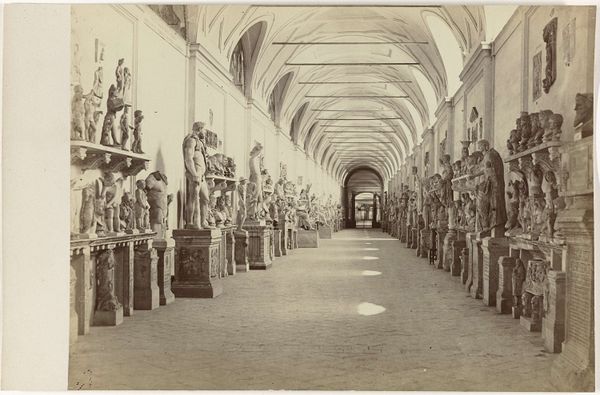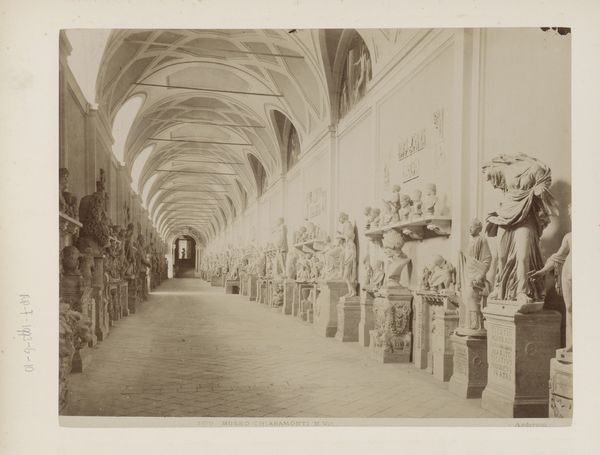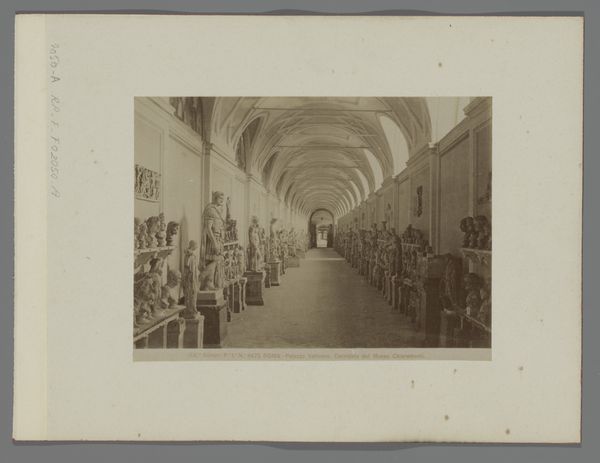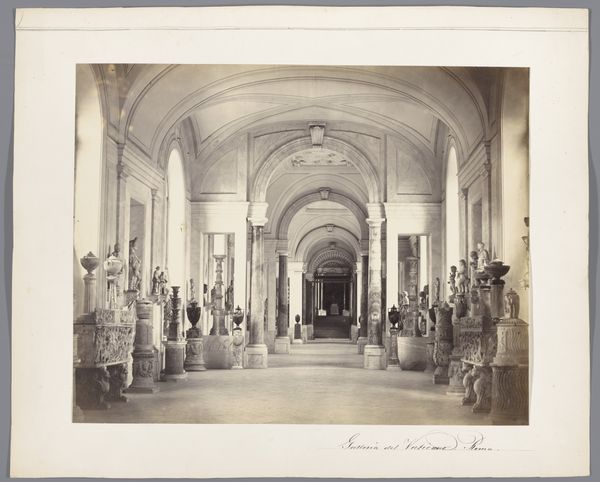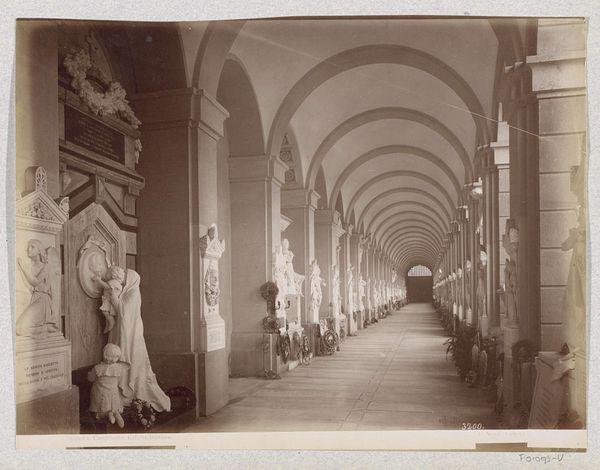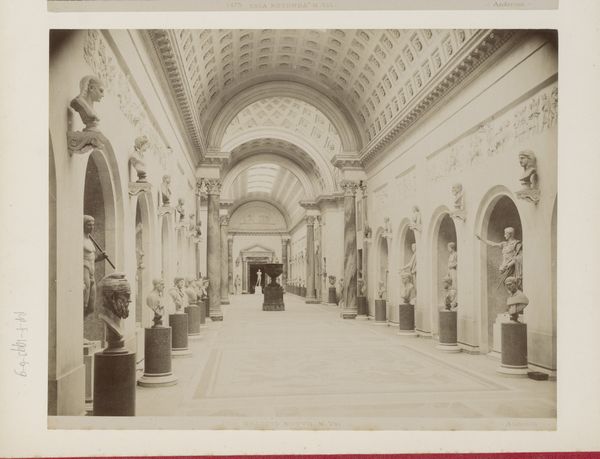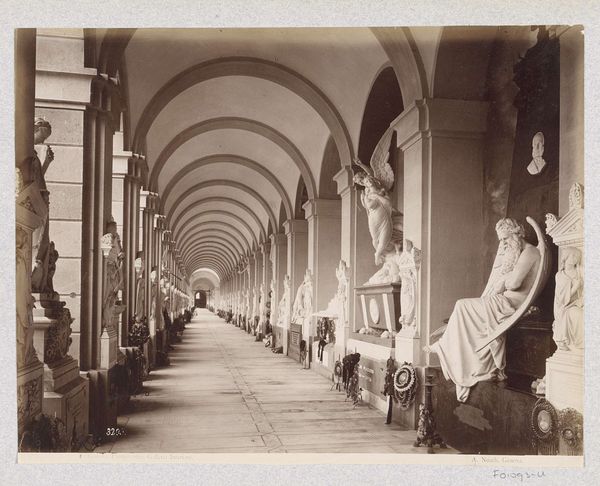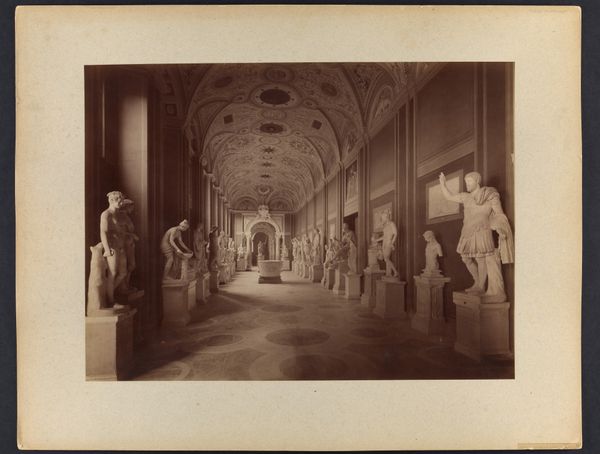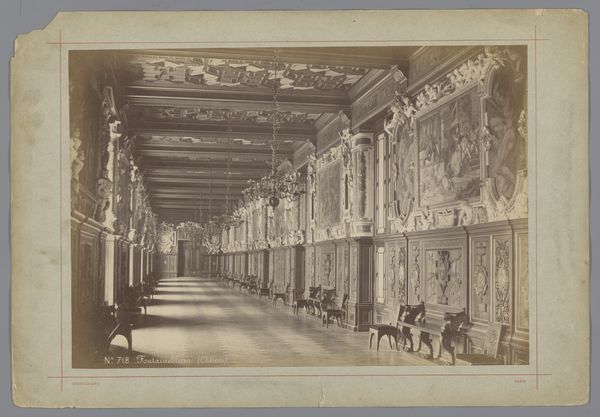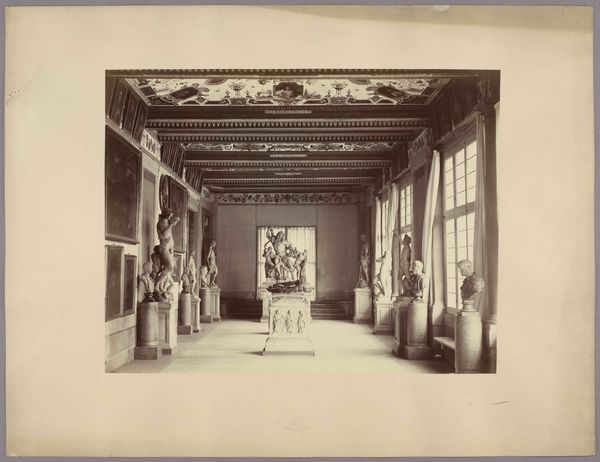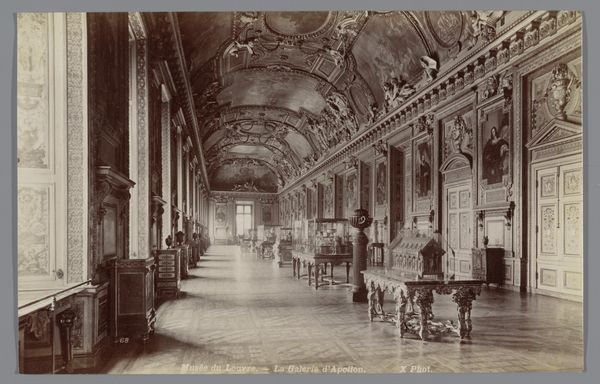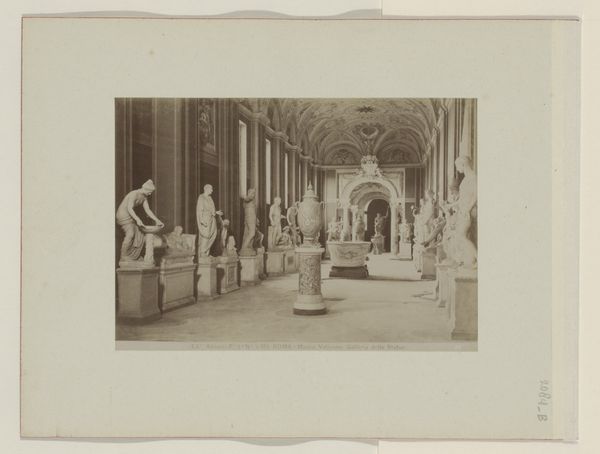
Dimensions: height 63 mm, width 101 mm
Copyright: Rijks Museum: Open Domain
Curator: Here we have a photograph taken between 1863 and 1871 by Michèle Mang, titled "Galerij in Museo Chiaramonti, Vaticaanstad," or Gallery in the Chiaramonti Museum, Vatican City. Editor: What immediately strikes me is the sheer volume of classical sculpture. The way they are arranged in this long, receding gallery space—it almost feels overwhelming, like a statement of power through cultural accumulation. Curator: It certainly speaks to the museological fervor of the 19th century. The Vatican was eager to display its holdings. Photographs such as this were used to demonstrate the wealth of culture in Europe. The neo-classical setting itself acts as a stage for antiquity. Editor: It makes me think about who had access to this display and how it reinforced societal hierarchies. Looking closer, it seems many busts on shelves are copies after Roman originals. Did this proliferation democratize the aesthetic experience, or did it dilute meaning by turning culture into spectacle? Curator: I would argue it attempted a degree of accessibility. While mass tourism wasn't fully established, the aim was likely to educate and inspire viewers by showcasing the canon of Western art, which inherently creates boundaries of what is art and what is not. Editor: I wonder about the power dynamics inherent in viewing these ancient artifacts outside their original contexts. We're not just seeing art, we're witnessing a historical moment where certain cultures claimed custodianship of antiquity. Where did they think their rights came from to assemble all of these items together like this? Curator: Precisely, this photographic work by Mang allows us to examine and challenge these appropriations and reimaginings, questioning how museums themselves construct narratives of power and shape our perception of art and history. Editor: Absolutely, this image is a testament to the collecting habits and aesthetic preferences of the time. It reminds us to continuously critique how museums operate and to whom their stories speak. Curator: I find myself contemplating our role now, contextualizing an image intended to instill reverence and possibly awe in a European audience in the mid-1800s, through a lens informed by current concerns about cultural heritage and its distribution. Editor: It urges me to continue examining institutional power structures, even as we use museum collections to ask better questions about cultural identity, representation, and ultimately justice in the cultural landscape.
Comments
No comments
Be the first to comment and join the conversation on the ultimate creative platform.
